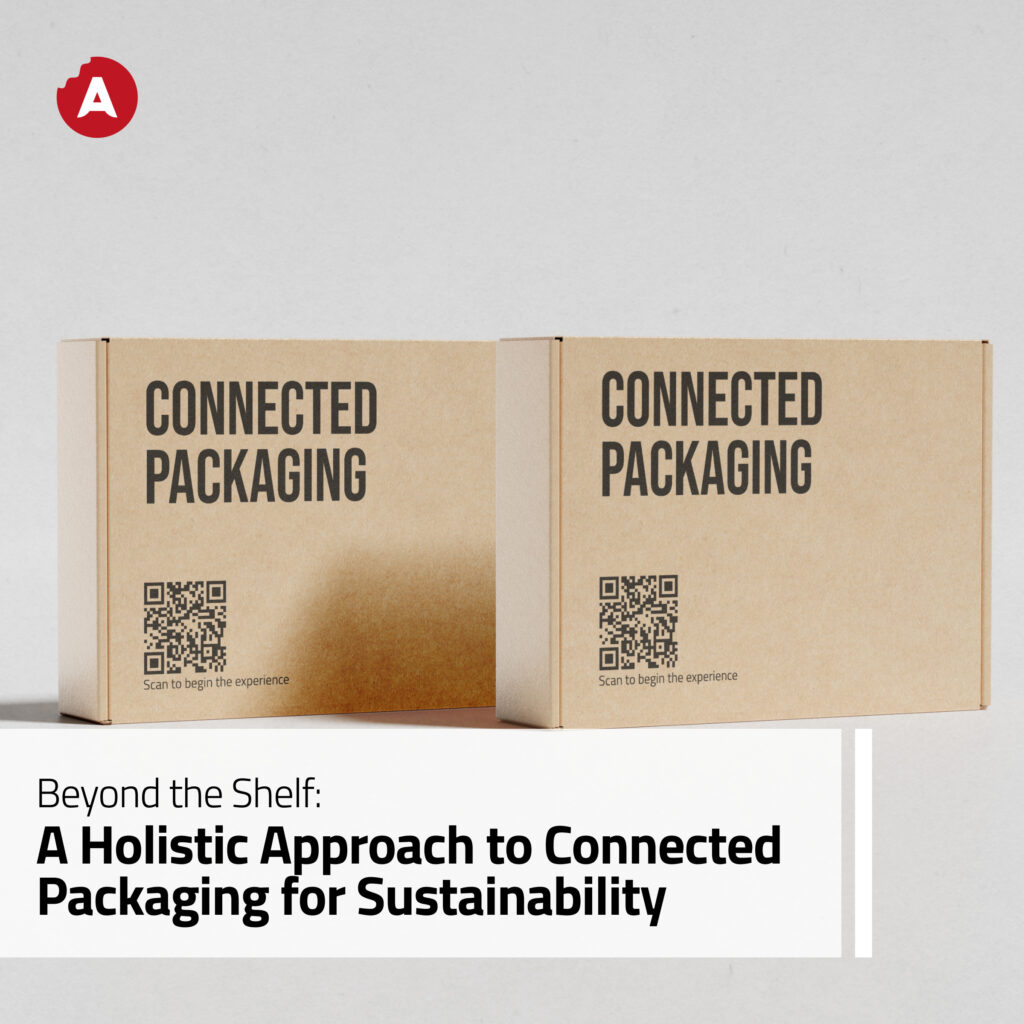
It is undeniable that connected packaging is revolutionizing the way consumers interact with products. From QR codes to NFC tags, these smart solutions offer a wealth of information at the tap of a smartphone. However, the journey of packaging doesn’t end at consumer interaction. This blog delves into the broader ecosystem of connected packaging for sustainability, emphasizing the crucial roles of recycling, reuse, and holistic packaging solutions.
The Evolution of Connected Packaging
Definition and Benefits
Connected packaging refers to packaging embedded with digital technology that allows consumers to access information, engage with the brand, and verify product authenticity. It enhances consumer experience by providing a seamless connection between the physical product and the digital world. However, focusing solely on consumer interaction overlooks the broader potential of connected packaging for sustainability.
Beyond Consumer Interaction
Connected packaging should be viewed as part of a larger lifecycle. While consumer engagement is essential, it is equally important to consider what happens to packaging post-consumption. To truly harness the potential of connected packaging for sustainability, we must design end-to-end solutions that address recycling, reuse, and the overall environmental impact.
Recycling: The First Step Towards a Circular Economy
Smart Recycling Initiatives
Connected packaging for sustainability can significantly improve recycling processes. For instance, packaging with embedded recycling information can guide consumers on proper disposal methods. Digital guides accessed via QR codes or NFC tags can provide clear instructions, reducing contamination and improving recycling rates.
Technology Integration
Integrating RFID and IoT technologies in packaging can track its lifecycle, ensuring that it reaches appropriate recycling facilities. Blockchain technology can add a layer of transparency, allowing consumers and companies to verify that packaging is being recycled correctly.
Challenges and Innovations
Despite the benefits, challenges such as contamination and sorting issues persist. Innovations in material science are addressing these problems by developing materials that are easier to recycle. By leveraging connected packaging for sustainability, these advancements can be effectively communicated to consumers, fostering better recycling habits.
Reuse: Extending Packaging Life
Designing for Reuse
One of the key aspects of connected packaging for sustainability is designing for reuse. Brands are increasingly creating packaging that can be repurposed. Modular design, for instance, allows parts of the packaging to be reused in different ways, extending its lifecycle and reducing waste.
Consumer Incentives
Connected packaging can also encourage consumers to participate in reuse programs. Through loyalty programs and incentives accessible via connected packaging, consumers can be motivated to return or repurpose packaging. Successful reuse initiatives often leverage digital engagement to promote sustainable practices.
Infrastructure and Logistics
Building systems to support the collection, cleaning, and redistribution of reusable packaging is essential. Connected packaging for sustainability plays a crucial role here by providing data that can optimize these processes. Case studies from companies with circular packaging systems demonstrate the viability and benefits of such approaches.
Sustainability: The Ultimate Goal
Eco-Friendly Materials
The use of biodegradable and compostable materials is a growing trend in sustainable packaging. By integrating smart technologies, connected packaging for sustainability can ensure that consumers understand how to properly dispose of these materials, thus enhancing their environmental benefits.
Life Cycle Assessment (LCA)
Life Cycle Assessment is vital for evaluating the environmental impact of packaging. Connected packaging for sustainability can facilitate LCA by providing accurate data on usage and disposal patterns. This data helps brands make informed decisions to minimize their ecological footprint.
Regulatory and Compliance Considerations
Navigating global sustainability regulations can be complex. Connected packaging for sustainability helps brands stay compliant by providing transparency and traceability. By embedding regulatory information and updates, connected packaging ensures that companies can adapt to changing requirements efficiently.
The Importance of Holistic Packaging Solutions
Systems Thinking
To achieve connected packaging for sustainability, it is essential to adopt a systems-thinking approach. Viewing packaging as part of a larger ecosystem allows for more sustainable design, production, and post-consumer management strategies.
Collaboration Across the Value Chain
Collaboration is crucial for the success of connected packaging for sustainability. Brands, consumers, recyclers, and policymakers must work together to create effective solutions. Examples of successful partnerships highlight how collaborative efforts can drive significant environmental benefits.
Future Outlook
Emerging trends in connected and sustainable packaging point towards a future where packaging is part of a circular economy. Innovations in smart materials, data analytics, and consumer engagement strategies will continue to evolve, making connected packaging for sustainability an integral part of our daily lives.
Connected packaging offers immense potential beyond consumer interaction. By focusing on recycling, reuse, and sustainability, we can create holistic solutions that contribute to a more sustainable future. Embracing connected packaging for sustainability ensures that our efforts today lead to a greener tomorrow, benefiting both the environment and future generations.
Incorporating connected packaging for sustainability into every stage of the packaging lifecycle is not just a trend but a necessity. By taking a comprehensive approach, we can transform packaging from a mere container to a powerful tool for environmental stewardship.
